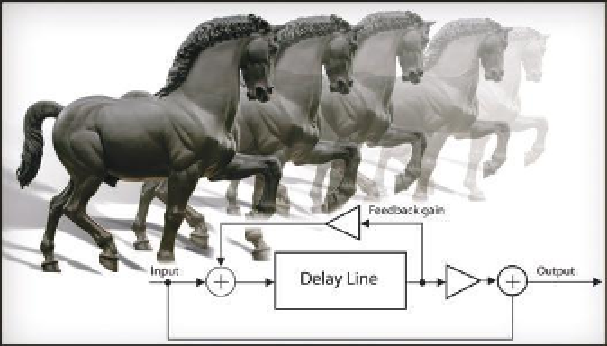Game Development Reference
In-Depth Information
In general, the more harmonics a sound has, the brighter and buzzier the sound will be. Higher
harmonics add a buzzy, thin quality to a sound; lower harmonics add roundness and fullness. Reducing
the number of higher harmonics makes the sound rounder, duller, and more mul ed. Starting from the
fundamental and eliminating lower frequencies makes the sound thinner and buzzier; the sound loses
its body. All sounds have a wide frequency spectrum; changing or emphasizing areas of EQ can make
a phone call sound as though it is coming through a small speaker or a call from headquarters sound
as though it is being played inside a helmet, like in
Halo
. EQ also plays a vital role in the i nal mix of a
game; the proper use of EQ puts all sounds in the proper places, so they can be clearly delineated in
the i nal mix.
Compression
Unlike the compression discussed earlier, this type of compression does not reduce i le size; instead,
it reduces dynamic range. This compression is accomplished through automatic detection of a certain
threshold. If an audio signal goes over this threshold, the output level is reduced in volume. That may
not sound useful, but if the reduced audio is then increased in volume, the result is a much louder and
more present sound. In a game, compression can be very useful in balancing out the volume levels of a
multitude of dif erent audio i les and channels.
Diagram of Delay ef ect: Although based on a simple concept similar to an echo, the ef ect
is then 'fed back' to the input to produce repeated echoes, eventually fading out to silence,
as shown here with the horse sculptures.
Credit:
Jeremy Engel.
Delay
Delay is a popular form of time manipulation, closely related to echo. Delay can be used to create
a variety of effects. Multiple delays (often called tap delays) can make a character sound as though
he is on the surface of the moon or make a single pair of horse hooves sound like a pack of wild
ponies.

































